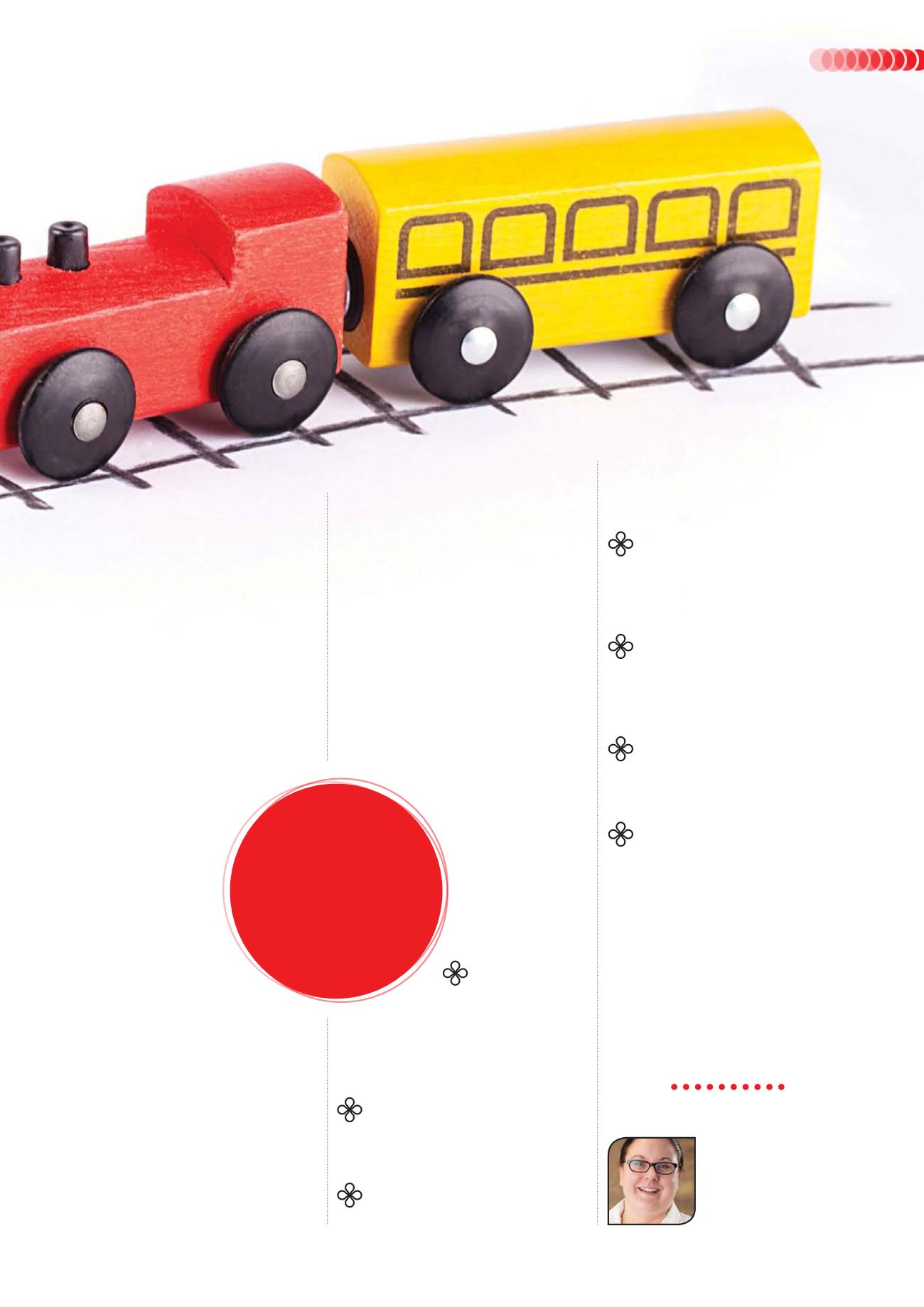
earlyyears.teachwire.net
85
nursery business
risk. If staff don’t understand fully what it
is they are meant to do, risk assessments
can cause more harm than good.
D
If a hazard is a substance or piece
of equipment, the best thing to do
is to eliminate the hazard altogether.
Where this can’t be done, choose a less
harmful/dangerous version.
D
Risk controls that require people to
do something are always the least
reliable and should always be used if
there is no other option – e.g. you may
provide PPE, but do your staff use it?
D
Remember, if you have five or more
employees, your healthy and safety
policy must be written down to comply
with the law.
D
Risk assessments are not about
writing pages but about highlighting
hazards and clearly stating risk controls
you have or need to put in place.
MCW is a family-run business
specialising in the streamlining
of health and safety and auditing
processes in the childcare industry.
Visit mcwconsulting.co.uk for
information on its services and
training, including IOSH Managing
Safely, First Aid and Fire courses
and other training.
Laura West is MCW’s
childcare health
and safety specialist.
Email
laura@
mcwconsulting.co.uk
Display ribbons/strings
– they may previously have supported
beautiful displays, but over time they fall
off and become a slack strangulation
risk. Always check the garden and
remove any potential hazards. Even if
you’re planning to replace the display
next week, take the ribbons/string down
until they’re needed.
Fences & gates
– most
nurseries have very good security at the
front door with key codes, intercoms and
CCTV; however, this is worthless if
you can simply walk round to
the garden and let yourself
in through the gate, or in
some cases, simply lean
over low-level fences
and pick up a child.
Try this yourself: if you
can reach your hand
over and open a gate,
so can a stranger. Fences
and gates may need to be
higher or additional locks
added lower down.
Garden play equipment
– because it’s outside, it isn’t checked as
regularly as that found indoors. Plastic
toys will get weathered over time and
become brittle, and may develop sharp
edges. All equipment should be checked
before use as part of your daily routine.
Gardens
– growing fruit and
vegetables is a great way to help
children understand where food comes
from. However, both children and staff
allergies need to be taken into account.
Strawberries shouldn’t be grown in a
nursery, and we have in the past also
found children with allergies to tomatoes
and even mint leaves. Again, full
knowledge of all your children’s allergies
is required – don’t plant anything you’re
unsure of.
RISK ASSESSMENTS
There are five basic steps to writing
an effective risk assessment. You must
identify the hazard; decide who might
be harmed and how; evaluate the risk
and decide on precautions; record your
findings and implement them; then
review your risk assessment
and update if necessary.
While bearing these
steps in mind, there are
also simple things you
can do to improve
the effectiveness of
your assessment
and ensure it’s fit for
purpose.
D
When writing a
risk assessment,
involve the people who will
carry out the task or activity;
they will have more knowledge of what’s
involved, and two minds are always
better than one.
D
Write your risk assessment clearly
and in plain language; avoiding
using jargon will help everyone to
understand.
D
Make sure your staff have read and
understand the risk assessment and
any actions they must take to control the
DID
YOU KNOW?
IF YOU SIGN OFF A
CHECKLIST WITHOUT
ACTUALLY CARRYING OUT
THE PHYSICAL CHECKS, IT’S
NOT WORTH THE PAPER
IT IS WRITTEN ON. THE
PERSON WHO HAS SIGNED
THE DOCUMENT WILL STILL
BE HELD ACCOUNTABLE IN
THE EYES OF THE LAW.


